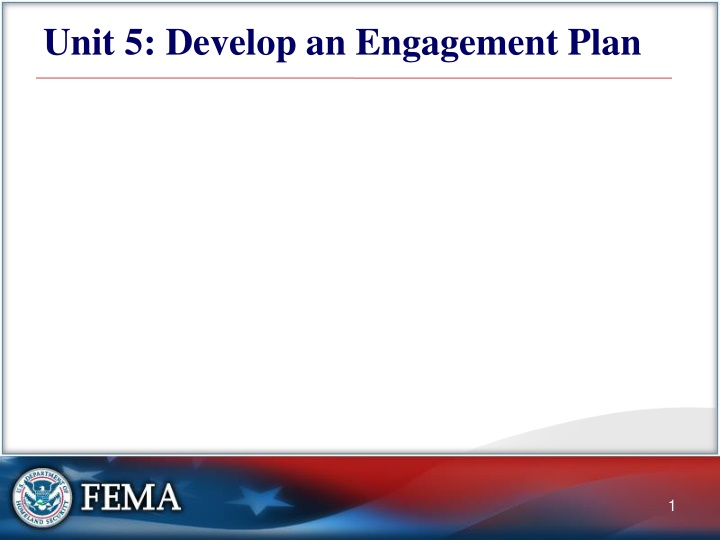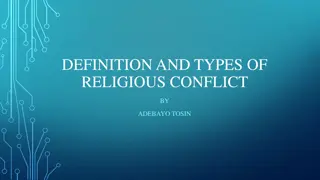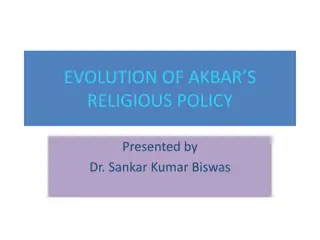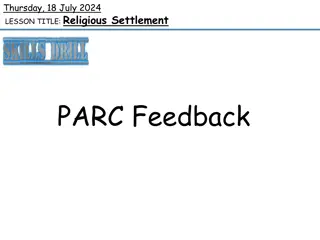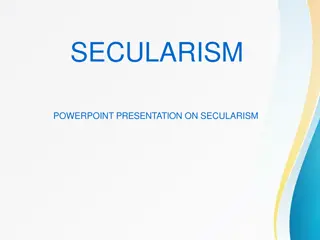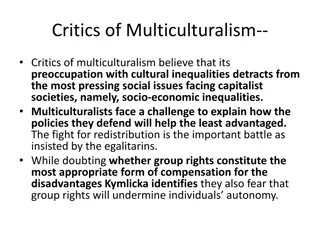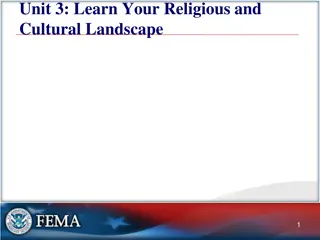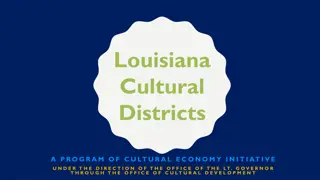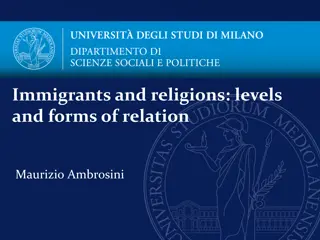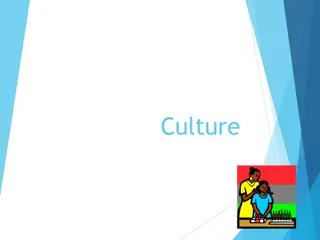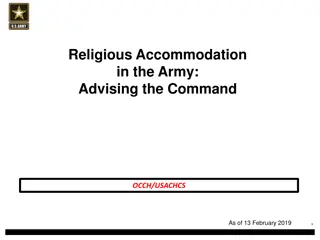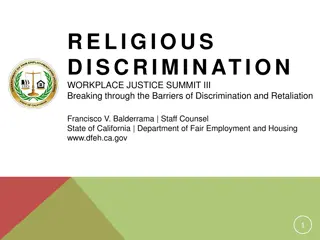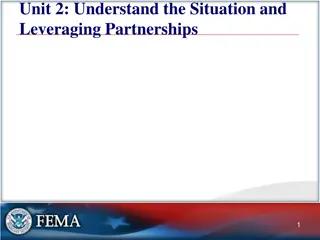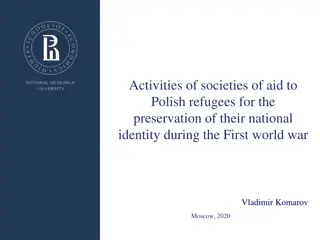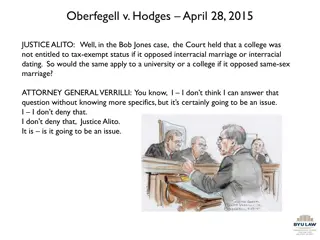Developing an Effective Engagement Plan for Religious and Cultural Communities
Learn how to leverage religious and cultural communities as partners and force multipliers in emergency management efforts. Discover strategies for contacting key stakeholders, conducting meetings, and maximizing effectiveness through established networks.
Download Presentation

Please find below an Image/Link to download the presentation.
The content on the website is provided AS IS for your information and personal use only. It may not be sold, licensed, or shared on other websites without obtaining consent from the author.If you encounter any issues during the download, it is possible that the publisher has removed the file from their server.
You are allowed to download the files provided on this website for personal or commercial use, subject to the condition that they are used lawfully. All files are the property of their respective owners.
The content on the website is provided AS IS for your information and personal use only. It may not be sold, licensed, or shared on other websites without obtaining consent from the author.
E N D
Presentation Transcript
Objectives Upon completion of this lesson, you should be able to: Determine ways religious and cultural communities can serve as partners Describe how using religious and cultural hierarchies and networks can serve as force multipliers Use the Tip Sheets in preparing for engagement with diverse groups 2
Determine Engagement Plan Who will be contacted/who is assigned? What you will do? When it will take place? Where it will happen? Why? Clearly state the purpose. How will you conduct meetings? How will you follow up? 3
Determine Engagement Plan (continued) Force multipliers Factors that dramatically increase, or multiply, the effectiveness of your efforts More efficient than trying to reach out to each individual that has been affected Religious leaders act as force multipliers who can reach multiple congregates more quickly 4
Determine Engagement Plan (continued) Who will you contact and in what sequence? Local or county Emergency Management Divisions (EMDs) Emergency management office partnerships coordinator Faith-based social service providers Designated state and local faith-based liaison offices Designated county and city departments faith- based liaisons 5
Determine Engagement Plan (continued) Who will you contact and in what sequence? Interfaith centers and disaster interfaiths Networks, associations, conferences, religious denominations, and governing bodies Faith leaders FEMA VAL and/or State VAL as VOAD liaison(s) DHS Center for Faith-Based and Neighborhood Partnerships via the National Response Coordination Center (NRCC) 6
Determine Engagement Plan (continued) What will you do? Work with existing faith communities to coordinate activities in the area Share any information youve gathered about faith communities with your team members Discuss other people or entities that will attend to provide assistance as part of a town hall format 7
Determine Engagement Plan (continued) Coordination of faith-based organizations What are their core capabilities? How have they helped in past? What are they doing now? 8
Determine Engagement Plan (continued) As you approach these organizations, you need keep the following in mind: Government asks, not tasks. 9
Determine Engagement Plan (continued) When will it take place? Request days other than holy days, days of congregational worship, and other major religious or cultural holidays Many religious leaders have a second job or take a weekday as their day off 10
Determine Engagement Plan (continued) Where will it take place? Request a space that is neutral 11
Determine Engagement Plan (continued) Why? Clearly state the purpose of the meeting Clearly state your objectives Be clear about what you can and cannot offer Only offer what you can deliver Follow up promptly and deliver what was offered 12
Determine Engagement Plan (continued) How will meetings be conducted? Conduct meetings with religious and cultural competency Ensure that the process does not favor one community over another Provide speakers who reflect the diversity of faith communities Outreach may be conducted in the context of a worship service 13
Determine Engagement Plan (continued) How will you follow up? Determine the need for subsequent meetings Develop a preliminary schedule Share any information learned with the leadership Continue to communicate with community religious leaders 14
Activity 5.1: Determine Engagement Plan Purpose: Determine ways religious and cultural communities can serve as partners Determine how to approach religious and cultural communities Describe how using religious and cultural hierarchies and networks can serve as force multipliers Estimated Time: 15 minutes Instructions: 1. Locate Worksheet 5.1 in your Student Manual. 2. Use the Tip Sheets to answer the questions presented. 15
Scheduling Meetings Scheduling or pre-planning appointments whenever possible Learn and follow approved government protocols Ask for meetings on days and times that are not usually designated for worship Be prepared for multiple offerings Periods of celebration and/or fasting will also require some flexibility http://www.interfaith-calendar.org/ Choose a neutral meeting space Avoid using sacred spaces within houses of worship Not all groups will want to engage 16
Customs and Etiquette Many cultures engage in rituals or relationship- building before discussing business Not engaging in these customs may be considered rude, which will hurt your outreach efforts Follow the lead of the religious leader you are meeting with Make every effort to remain for the full duration of the meeting 17
What Clothing to Wear Dressing appropriately can yield more successful outcomes Wear modest or traditionally appropriate clothing when entering houses of worship Clothing that covers your shoulders, chest, knees, or elbows Both men and women should fully cover their legs When in doubt, dress more formally Observe what others are wearing and model your attire accordingly 18
Footwear and Head Covering Etiquette Footwear In gurdwaras, mosques, and temples, it is expected that you remove your shoes to respect the way community members treat their space Head Covering In Jewish and Sikh houses of worship, men should offer to cover their heads In the prayer space of a mosque, women must cover their hair (they can leave their hair uncovered in other areas of the mosque) When entering a church, and many other houses of worship, you would be expected to remove your hat 19
Activity 5.2: Tip Sheets (Part 1) Purpose: Use the tip sheets in preparing for engagement with diverse groups Estimated Time: 15 minutes Instructions: 1.Locate Worksheet 5.2 in your Student Manual. 2.Use the Tip Sheets to answer the questions presented. 20
6. Greeting Religious or Cultural Leaders When greeting religious and/or cultural leaders, use their proper title Shows respect for their chosen leaders and traditions Showing respect in this manner does not equal endorsement or conformity to another belief system If you are unsure of the title, ask: "What should I call you? How would you like to be addressed? 21
Greeting Religious Leaders (continued) Know the appropriate protocols when greeting religious leaders Words Physical gestures Especially important when interacting with senior leaders or elderly community members Special greetings used by adherents are not required for non-adherents 22
7. Physical Interaction In general, you should not initiate physical interaction It is best to wait for the leader or adherent to initiate physical contact Some religious leaders should not be touched Some leaders can only be touched by members of their religious tradition Some religious leaders cannot be touched at all by members of the opposite gender Prepared to offer an alternate greeting to a handshake 23
Physical Interaction (continued) Understand how different faith communities perceive physical contact Touch can be seen as a friendly gesture, invasive, or even taboo Some interactions may be commonplace in other cultures Handholding by individuals of the same gender Standing in close proximity Use of the left hand 24
Door-to-Door Outreach Person who answers the door may be religious leader, a staff member, or a lay community member Do not make any assumptions based on the dress or the appearance Ask to speak to the appropriate leader who can speak on behalf of the congregation or community organization The leader you are seeking may or may not be a member of clergy 25
9. Outreach in the Context of Worship Services While conducting outreach, you may be asked to attend worship services You may politely decline participation and follow up after the service 26
9. Outreach in the Context of Worship Services If you do decide to attend, you should keep the following in mind: Context matters Prepare your team Ask the amount of time the services typically take If you are not going to stay for the entire service, let them know beforehand that you are going to leave early Ask before participating in worship or prayer services, such as candle lighting or incense burning Avoid touching religious items or books unless you are asked to do so Keep any sacred books off the ground 27
Provision of Food in a Disaster Setting Religious leaders and people of faith often follow dietary laws or choose to follow specific diets Halal Kosher Vegetarian or Vegan Every effort should be made to provide appropriate food sources during a disaster 28
Activity 5.3: Tip Sheets (Part 2) Purpose: Use the tip sheets in preparing for engagement with diverse groups Estimated Time: 20 minutes Instructions: 1.Locate Worksheet 5.3 in your Student Manual. 2.Use the Tip Sheets to answer the questions presented. 29
Discussion: Engagement Plan (Part 4) For this activity, you will review the following section: Strategies for Engagement Questions: What tools or resources would you use to answer the questions in the Strategies for Engagement section? How might this information differ from FEMA's point of view vs. a religious leader's point of view? Is there any other information you might include? 30
Lesson Summary You should now be able to: Determine ways religious and cultural communities can serve as partners Describe how using religious and cultural hierarchies and networks can serve as force multipliers Use the Tip Sheets in preparing for engagement with diverse groups 31
